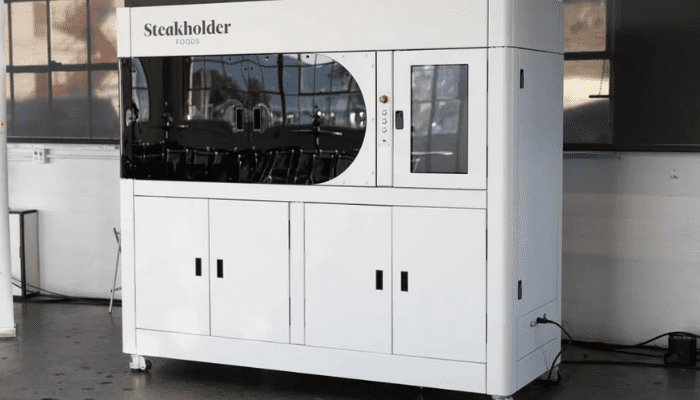Steakholder Foods’ First 3D Printed Eel: Tempting or Not?

Today, the eel industry faces a number of challenges due to significant and ever-increasing demand. According to Industry Research, the global eel market was estimated to be worth $4.3 billion in 2022 and is expected to reach $4.8 billion by 2028. While the majority of consumed eels are farmed, concerns persist regarding the potential extinction of numerous species, whether they belong to the saltwater or freshwater varieties. This situation makes it difficult to raise and use eels for subsistence purposes. Indeed, this sector faces several significant challenges, including overexploitation and the risk of extinction. On-farm breeding difficulties due to the eels’ complex life cycle, poaching, and the black market exacerbate the problems. However, a promising solution is emerging from Israeli start-up Steakholder Foods, which has succeeded in creating the world’s first 3D printed eel.
This breakthrough was made possible by the application of bioprinting. Currently, the eel is made entirely from plants, but the idea is to incorporate cultured eel cells in the future. This first 3D-printed eel highlights Steakholder Foods’ ability to reproduce this fish’s complex texture accurately. This is made possible by the precise layering and distinctive combination of materials in Steakholder Foods’ exclusive 3D printing technology.

The Steakholder Foods 3D printer
3D Printed Eels: A Culinary Evolution?
Thanks to its unique printing method, Steakholder Foods (previously used for other meat products) can significantly reduce the number of ingredients required for its 3D printed product compared with conventional plant-based alternatives. This approach could place Steakholder Foods’ plant-based 3D printed eel at the forefront of the industry. However, recreating the unique, melt-in-the-mouth texture of eel meat presents a challenge.
Although the company does not disclose the precise types of plants used in its printing process, current plant-based substitutes for eel include soy protein and eggplant. The manufacture of the 3D-printed fish uses plant and cultured cells to create a biological ink. This ink is then printed in a layered structure based on digital design. The 3D printed eel is produced using DropJet technology, designed specifically for seafood. This technology uses drops of gel to help form the final structure, reproducing the texture of the fish.
But being able to do something does not necessarily mean you should; still, the creation of the 3D printed eel represents a huge step forward for the food industry. As meat consumption has waned in recent decades, and the call for environmentally conscious and sustainable diets has surged, Steakholder Foods’ 3D printed eel not only provides an intriguing culinary experience but also embraces the expanding sustainability movement, offering a solution to consumers seeking eco-friendly alternatives in their dietary preferences. Considering the deep integration of eel into culinary traditions, particularly in countries and regions such as Asia, Europe, and the coastal areas of the United States, Steakholder Foods’ breakthrough in 3D printed eel production may provide an avenue for preserving the cultural significance of eel-based dishes without compromising on environmental values.
Arik Kaufman, CEO of Steakholder Foods, concluded, “The launch of our 3D printed eel marks a pivotal moment in the seafood industry, showing the vast potential of our DropJet technology – Steakholder Foods’ solution for fish and seafood printing. This technology is designed to enable partners to generate products on a potential industrial scale of hundreds of tons monthly, not only at lower costs compared to wild eel, but also with the flexibility to create various printed products using the same production line. Such versatility could significantly boost profitability for food companies and lead the way to a shift towards more efficient and sustainable practices in the industry. This product exemplifies the broader possibilities our technology offers our partners.”
To access the full press release, please click here. What do you think of the 3D printed eel? Let us know in a comment below or on our LinkedIn, Facebook, or Twitter pages! Don’t forget to sign up for our free weekly Newsletter for the latest 3D printing news straight to your inbox! You can also find all our videos on our YouTube channel.
*All Photo Credits: Steakholder Foods






